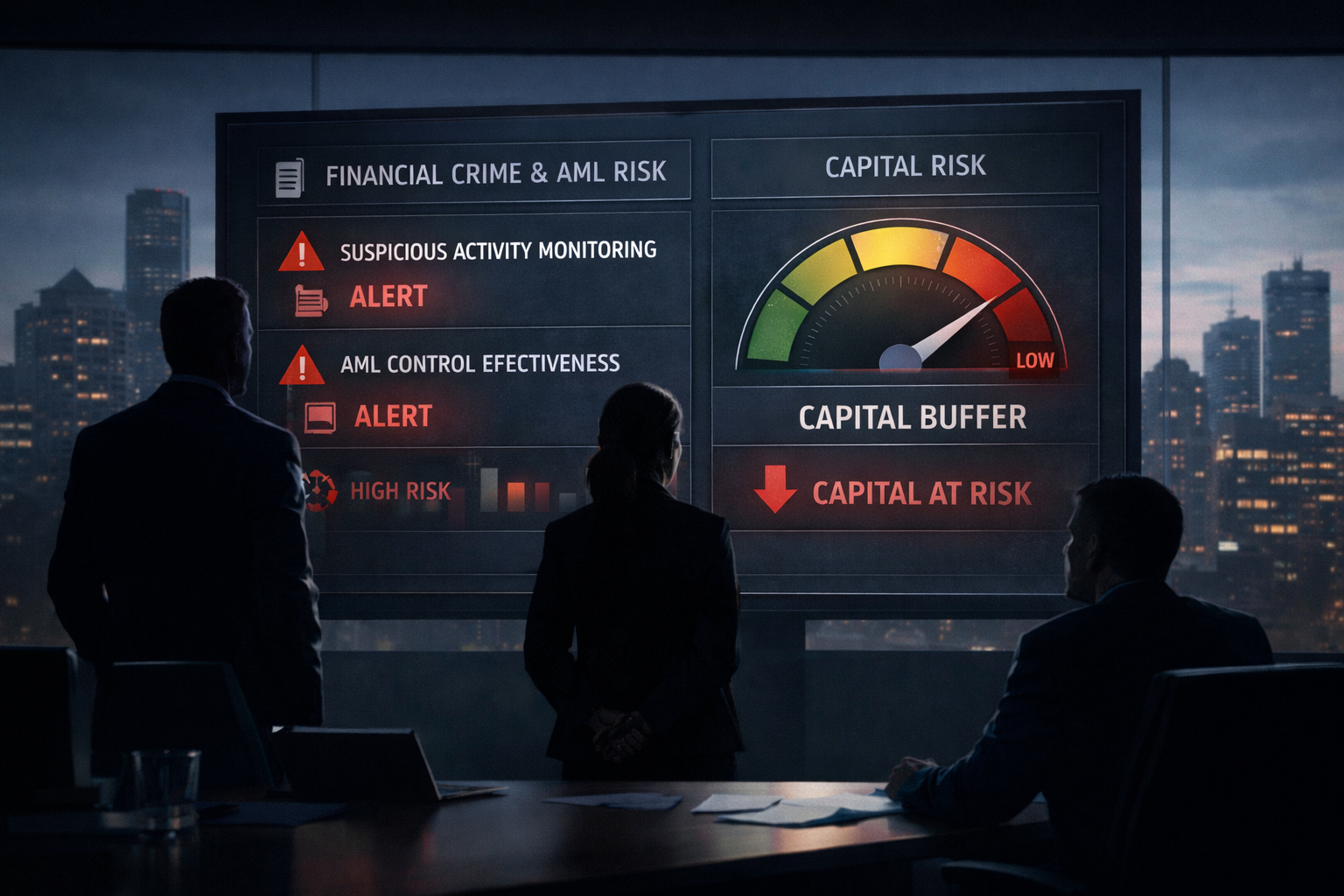Tookitaki: Reflecting on a Transformative 2024
.svg)
As we close out 2024, it’s time to reflect on a year of remarkable achievements and progress. From driving innovation to deepening partnerships and expanding our reach across Asia-Pacific and beyond, Tookitaki has continued to evolve with a steadfast commitment to its mission of building trust in financial services.
In an increasingly complex financial crime landscape, our ability to innovate and adapt has strengthened our position as a trusted partner to institutions navigating these challenges. Here’s a look back at the milestones that defined Tookitaki’s journey in 2024.
1. 2024: A Year of Evolution
This year was defined by resilience, innovation, and growth as Tookitaki strengthened its leadership in anti-money laundering (AML) and fraud prevention. With financial crime becoming increasingly sophisticated, we continuously evolved our solutions to address the complex needs of financial institutions across Asia and beyond.
Tookitaki emerged as a category leader in Watchlist Screening, Enterprise Fraud, Payment Fraud, and AML TM Quadrants of Chartis, underscoring the depth and maturity of our FinCense platform. We also received accolades from Juniper Research (Banking Fraud Prevention Innovation 2024) and Regulation Asia - Best Transaction Monitoring Solution (Fraud & Financial Crime Category), Asian Banking and Finance Award (Winner of the AI-Powered Analytics and RegTech Initiative Award) and were honoured by the prestigious ASEAN Business Advisory Council at the ASEAN Business Awards 2024.
These recognitions validate our unique approach of combining collaborative intelligence from the AFC Ecosystem with the Federated AI capabilities of FinCense. By enabling financial institutions to leverage real-world scenarios while safeguarding data privacy, we have empowered them to adapt to evolving financial crime threats more effectively and at scale.
2. Commitment to Our Mission
At Tookitaki, our mission is to build trust in financial services by enabling institutions to combat fraud and meet AML compliance standards effectively.
In 2024, we significantly enhanced our platform to address critical threats such as account takeovers, mule networks, scams, and the misuse of shell companies. These advancements have equipped institutions to confidently navigate complex regulatory landscapes while strengthening trust with their stakeholders. As a testament to our impact, Tookitaki is now a partner of choice for at least one of the top three financial institutions in most Asia-Pacific countries.
3. Key Innovations and Technology
Innovation drives everything we do at Tookitaki. This year, we introduced critical advancements to address evolving challenges:
- FinCense Platform: We delivered major enhancements in dynamic risk scoring, real-time fraud detection, and enhanced regulatory reporting, equipping institutions with tools to streamline compliance workflows and stay ahead of emerging threats.
- Infrastructure Upgrades: This year, we made transformative enhancements to our FinCense platform, cutting deployment time by 50% through streamlined processes and standardisation. Reliability has been boosted to 99.95% uptime using a containerised microservices architecture, ensuring seamless operations. To further optimise efficiency, we introduced dynamic resource scaling and decoupled storage and computing, minimising infrastructure requirements even during peak periods.
These innovations empower our clients to build proactive, scalable compliance systems that adapt to the fast-changing financial crime landscape.
4. Compliance-as-a-Service: Enabling Scalable, Seamless Compliance
We launched Compliance-as-a-Service (CaaS) in 2023 to complement our on-premise deployment, offering financial institutions a flexible and scalable alternative. This year, CaaS gained significant momentum, with client go-live rates increasing by 50% in H2 compared to H1, reflecting its growing adoption and trust across the region.
We are leveraging our strategic partnerships with AWS and Google Cloud Platform (GCP) to deliver CaaS solutions across Asia-Pacific and Saudi Arabia, ensuring robust compliance infrastructure tailored to regional needs. This progress marks a pivotal shift as larger banks are increasingly embracing CaaS as their preferred compliance framework.
5. Client Milestone
This year, Tookitaki solidified its leadership in Asia-Pacific, working with at least one of the top three financial institutions in most countries across the region. Our partnerships with industry leaders such as UOB (Singapore), Maya Bank (Philippines), Fubon Bank (Taiwan), AEON Bank (Malaysia), GXS Bank (Singapore), and Tencent (Singapore) reflect the trust placed in us to address critical compliance challenges.
These collaborations highlight Tookitaki’s growing influence in delivering cutting-edge compliance solutions tailored to the needs of some of the most prominent institutions in Asia.
6. Community of Innovators
The AFC Ecosystem embodies the power of collaboration in fighting financial crime. Tookitaki continued to lead industry collaboration through its AFC Ecosystem, fostering a community of AML and fraud prevention specialists and financial institutions to collectively combat financial crime.
In 2024, we hosted knowledge-sharing initiatives to address emerging crime typologies. We expanded our scenario library significantly, enabling financial institutions to detect and mitigate emerging threats proactively. We grew our consortium by joining associations like ABCOMP, Fintech Philippines Association, FinTech Association of Hong Kong, Fintech Association of Malaysia (FAOM), and AICB, building one of the largest communities for financial crime prevention in Asia.
Also, our AFC Ecosystem community delivered unparalleled value this year, contributing a new financial crime scenario every second day.
7. Strategic Partnerships
Collaboration has been a cornerstone of our success. This year, Tookitaki further expanded its extensive partner ecosystem to better meet the bespoke compliance needs of financial institutions across the Asia-Pacific region. By deepening our collaboration with key advisory partners like Arthur D. Little, SIA and strengthening cloud partnerships with AWS and Google Cloud Platform (GCP), we have enhanced our ability to deliver tailored solutions at scale.
These partnerships ensure we can deliver tailored, scalable, and region-specific solutions, empowering institutions to address complex financial crime challenges with greater efficiency.
8. Fueling Innovation: New Investments, Deeper Commitments
Earlier this year, we welcomed TGV as a new investor, marking a significant milestone in our journey to revolutionise compliance. This investment strengthens our ability to scale operations, advance our technology, and tackle the evolving challenges of financial crime with precision and agility. It reflects the trust and confidence of our partners and stakeholders in Tookitaki’s vision to build resilient and scalable compliance solutions that address the most pressing compliance challenges of today and tomorrow.
Closing Note
To our clients, partners, and stakeholders: thank you for being an integral part of this journey. Together, we are building the Trust Layer for Financial Services, reshaping the way financial systems combat crime while building resilience. This mission is more than a vision—it’s a shared responsibility that inspires us every day. Here’s to a 2025 filled with innovation, collaboration, and a safer financial ecosystem for all!
Experience the most intelligent AML and fraud prevention platform
Experience the most intelligent AML and fraud prevention platform
Experience the most intelligent AML and fraud prevention platform
Top AML Scenarios in ASEAN

The Role of AML Software in Compliance









